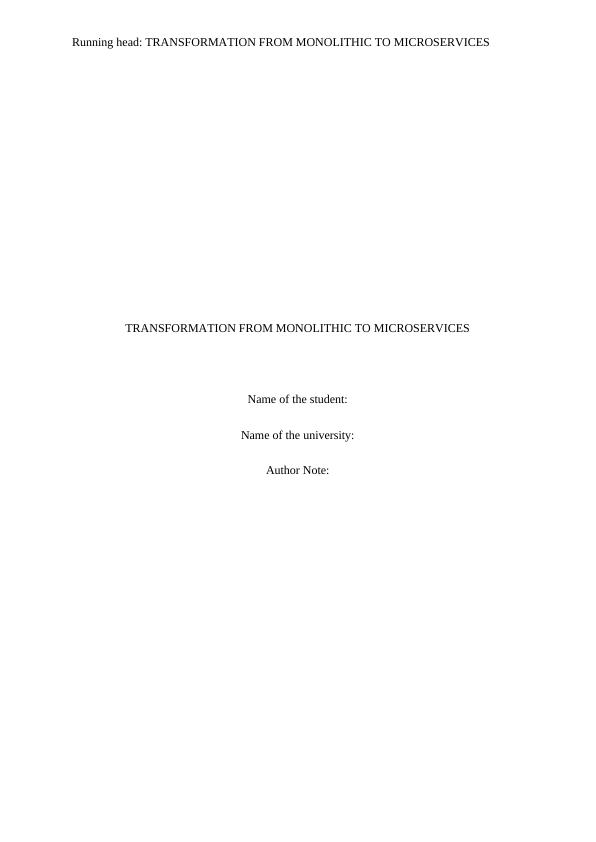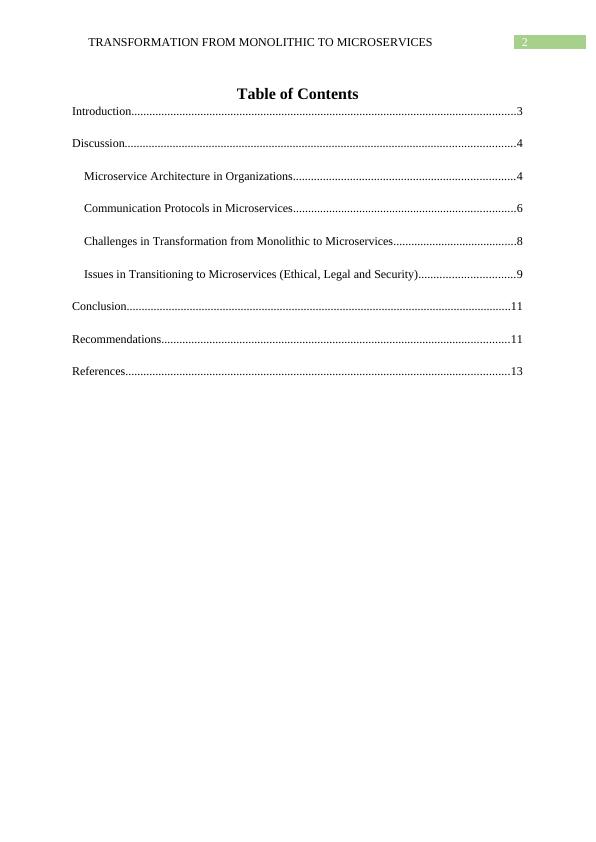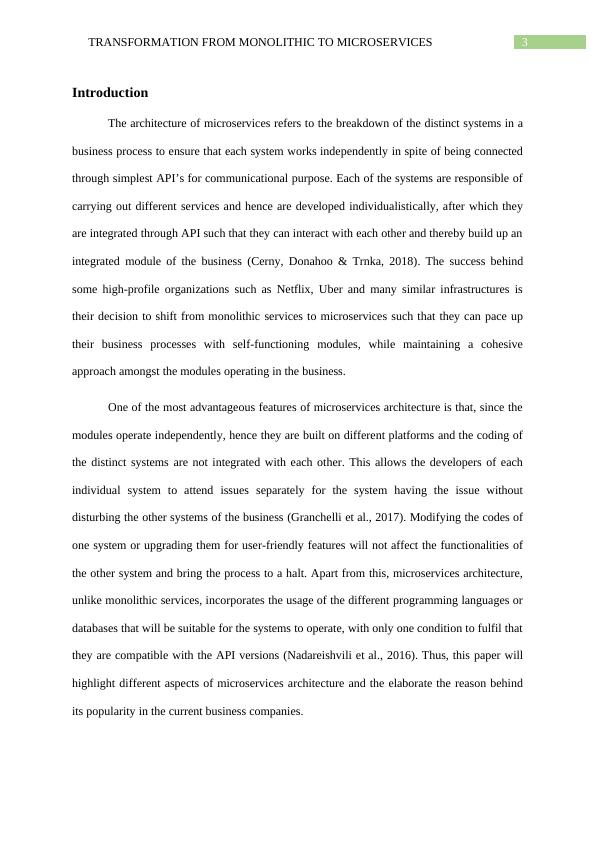Transformation from Monolithic to Microservices | Report
Examine a case and advise a company in the transition to microservice architecture.
Added on 2022-07-29
About This Document
Microservices architecture is a subject related to IT. In this assignment there is nothing technical, but its just a written assignment of 2500 words. I am attaching two files one is the pdf file that means how to make this assignment. I am attaching the solved part also that means the solution. The word file is of another student so you can have the exact idea how to make it and it will become an easy task for you to make this assignment. Please just take the idea from the word file but do your own work and research. I have already got an Academic integrity issue so please very careful.
Transformation from Monolithic to Microservices | Report
Examine a case and advise a company in the transition to microservice architecture.
Added on 2022-07-29
End of preview
Want to access all the pages? Upload your documents or become a member.




